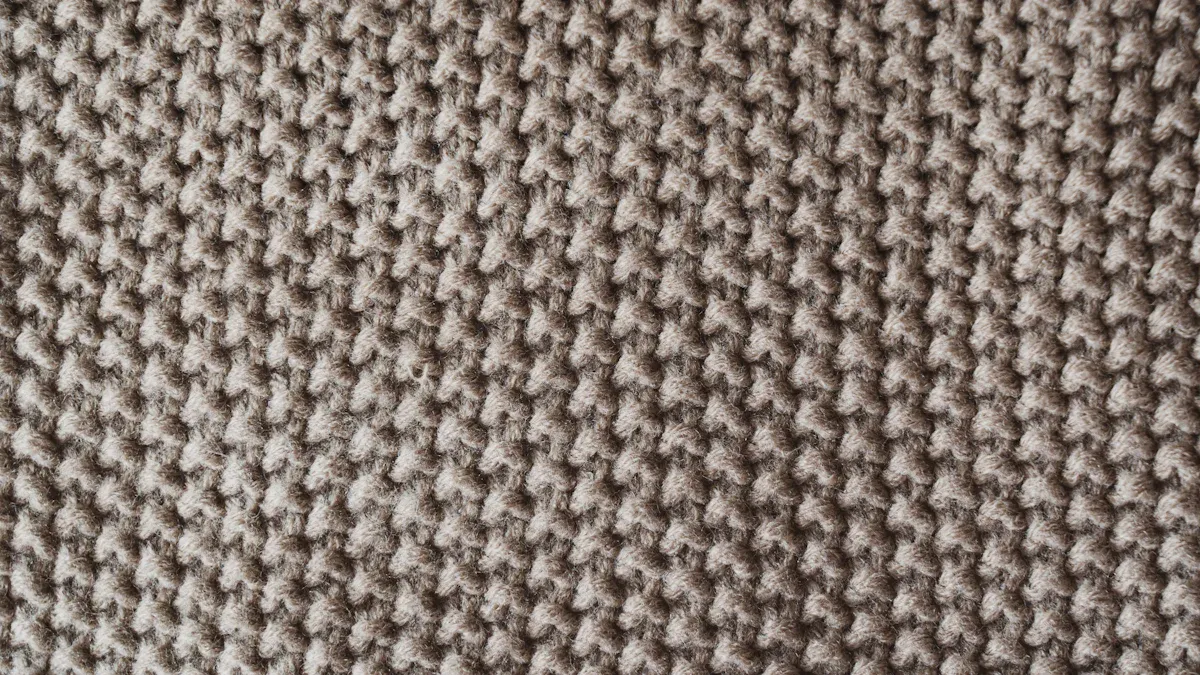
When you pick fabric for a project, you want it to look nice. It should feel good and last a long time. Choosing between knit vs woven fabrics changes how your clothes or home items work. Woven fabrics have threads that cross over each other, making them stronger and more durable. In contrast, knitted fabrics use yarn that forms loops, resulting in a softer and stretchier texture. However, knitted fabrics may not maintain their shape as well. You can see the difference in this table:
Fabric Type | Durability | Stretch Properties | Ideal Use Cases |
|---|---|---|---|
Woven | Superior | Controlled stretch and strong recovery | Structured garments like trousers and blazers |
Knit | Moderate | Greater flexibility but less recovery | Casual and activewear |
Choosing the right fabric between knit vs woven fabrics helps you achieve the best comfort and style.
Key Takeaways
Woven fabrics are tough and last a long time. They work well for clothes like blazers and trousers that need shape.
Knit fabrics feel soft and can stretch easily. They are great for comfy clothes and sportswear like T-shirts and leggings.
You can do easy tests to tell fabrics apart. Knits have loops, and wovens have a criss-cross look.
Think about the fabric’s weight and what it is made of. Woven fabrics come in many weights. They often cost more because they are harder to make.
Always pick the right fabric for your project. This helps your clothes feel good, last long, and fit well.
How to Tell if a Fabric is Knit or Woven

Choosing the right fabric starts with knowing how to tell if a fabric is knit or woven. You can use simple tests and visual clues to make a quick decision. Try these methods to identify your fabric type before you start your project.
Visual Clues
You can spot the difference between knit and woven fabrics by looking closely at the surface. Use these steps:
Hold the fabric up to the light.
Look for tiny loops or braids. These show you have a knit fabric.
Search for a criss-cross pattern, like a small grid or checkerboard. This means you have a woven fabric.
Here is a table to help you compare:
Fabric Type | Visual Indicator |
|---|---|
Knit Fabric | Tiny loops or braids on the surface |
Woven Fabric | Criss-cross grid or checkerboard pattern |
Tip: Woven fabrics often look tighter and more structured. Knit fabrics appear softer and may show small loops.
Stretch Test
You can use the stretch test to check how to tell if a fabric is knit or woven. Follow these steps:
Hold the fabric with both hands.
Gently pull the fabric in different directions.
If the fabric stretches easily in both directions, you likely have a knit fabric. If the fabric resists stretching and feels firm, it is probably woven.
Woven fabrics stretch very little and keep their shape.
Note: Most knit fabrics stretch both lengthwise and widthwise. Woven fabrics only stretch a little, usually across the width.
Wrinkle and Fray Test
You can use the wrinkle and fray test to learn more about your fabric. Try these steps:
Scrunch the fabric in your hand and release it.
Check if the fabric wrinkles easily. Woven fabrics tend to wrinkle more.
Look at the edges. If the fabric frays or threads come loose, it is likely woven. Knit fabrics rarely fray and the edges stay neat.
Tip: Woven fabrics often need hemming to prevent fraying. Knit fabrics usually do not fray, so you can leave the edges unfinished.
Thread Pulling
You can also use thread pulling to see how your fabric reacts. Try this method:
Pull a thread from the edge of the fabric.
Notice how the fabric responds.
Knitted fabrics use one thread that loops back on itself. When you pull a thread, the fabric may stretch and change shape. Woven fabrics use many threads that cross each other. When you pull a thread, the fabric stays firm and does not sag.
Knitted fabrics feel flexible and deform easily when you pull a thread.
Woven fabrics resist pulling and keep their shape.
Tip: If you need a fabric that stays stable, choose woven. If you want flexibility, pick knit.
By using these tests, you can quickly learn how to tell if a fabric is knit or woven. These simple steps help you make smart choices for your sewing, crafting, or manufacturing projects.
Knit vs Woven Fabrics
Difference Between Woven and Knit Fabric
You can tell woven and knit fabric apart by how they are made. Woven fabrics have yarns that cross each other at right angles. Knit fabric is made when yarn forms loops in a pattern. This makes each fabric feel and work differently. Here are some main points:
Knitted fabrics stretch more because of their loops. Woven fabrics do not stretch much.
Woven fabrics keep their shape and do not sag. Knit fabric can shrink or lose shape after washing.
Woven and knit fabric handle water differently. Woven fabrics keep water out better. Knit fabric soaks up more water.
Woven fabrics wrinkle easily and need ironing. Knit fabric usually does not wrinkle.
Woven fabrics last longer because of their strong structure. Knit fabric can wear out faster.
The difference between woven and knit fabric is important for comfort, strength, and how your project looks.
Knit Fabric Structure and Properties
Knit fabric has loops that link together in rows. This makes the fabric soft and stretchy. Knit fabric is flexible and comfortable. You see it in T-shirts, sportswear, and leggings. Knit fabric uses cotton, polyester, or viscose fibers. Each fiber changes how the fabric feels and works. Polyester makes knit fabric stronger. Cotton makes it softer. Knit fabric can move sweat away from your skin, but it may pill or snag. Jersey stretches in all directions, so it is good for clothes that need to move with you.
Woven Fabric Structure and Properties
Woven fabrics are made by yarns crossing over and under each other. This makes the fabric tight and stable. Woven fabric is strong and lasts a long time. You find woven fabrics in shirts, pants, and jackets. Jersey is not woven, but you can compare its stretch to woven fabric, which does not stretch much. Woven fabrics come in different weaves like plain, twill, and satin. Each weave changes how the fabric breathes and how long it lasts. Plain weave is strong and lets air through. Satin weave feels smooth but may not last as long. The difference between woven and knit fabric shows in how woven fabrics do not tear easily and keep their shape.
Weave Type | Breathability Impact | Durability Impact |
|---|---|---|
Plain Weave | Good air flow | Strong and balanced |
Twill Weave | Less air flow, drapes well | Lasts a long time |
Satin Weave | Lets more air through | May not last as long |
Specialty Weaves | Best air flow, depends on how it is made | Changes based on weave |
Fabric Selection Tips

Clothing Applications
You want your clothes to feel nice and last long. Think about what each fabric does before you choose. Knit fabrics are best for casual clothes and sportswear. They stretch and let you move easily. You see knit fabric in T-shirts, leggings, and sports clothes.
When you pick knit fabrics for sports, remember these things:
Type of activity: Use polyester, nylon, or spandex blends for tough sports.
Comfort and fit: Pick soft, smooth fabrics that stretch well.
Durability and maintenance: Choose fabrics that keep color and shape after washing.
Versatility: Find fabrics good for both sports and relaxing.
Woven fabric is better for dressy clothes. It keeps its shape and looks neat. You see woven fabric in dress shirts, pants, and blazers. Woven fabric holds pleats and creases, so it looks sharp. It lasts longer and does not stretch out of shape. Knit fabrics look more relaxed and do not work for fitted styles.
Tip: Always check the pattern directions. Some patterns need knit fabrics, others need woven fabric. This helps you get the right fit and look.
Home Textiles
You use both knit fabrics and woven fabric at home. Each one has special features. Knit fabrics are great for blankets and cushion covers. They feel soft and cozy. They drape nicely over furniture. The table below shows why knit fabrics are good for home use:
Advantage | Description |
|---|---|
Comfort | Knitted fabrics feel soft and cozy, great for blankets and cushions. |
Flexibility | The stretch in knitted fabrics makes them comfy and easy to use. |
Draping | Their loops help them drape well on furniture. |
Versatility | You can use them for many home items. |
Woven fabric is best for curtains and furniture covers. It is strong and lasts a long time. You find woven fabric like twill and canvas in these things. To make home textiles last, look for these:
Fiber type: Polyester and nylon make woven fabric stronger than cotton or wool.
Weave and construction: Tight weaves like twill make fabric last longer.
Finishes and treatments: Stain resistance, water repellency, and UV protection help fabric last.
Note: Knowing the difference between knit and woven fabrics helps you avoid mistakes. Always match the fabric to the pattern and use. Use the right sewing steps for each fabric.
Garment Manufacturing
When making clothes, you must pick knit fabrics or woven fabric for the job. Knowing the difference helps you match the fabric to your project. Here are some things to think about:
Style: Use knit fabrics for loose shapes. Pick woven fabric for firm clothes.
Functionality: Knit fabrics are good for casual wear. Woven fabric is best for dressy clothes.
Fabric weight: Light knit fabrics keep you cool in summer. Heavy knit fabrics keep you warm. Woven fabric comes in many weights for different needs.
Climate: Knit fabrics let air in for hot days. Heavy woven fabric keeps you warm in cold weather.
Breathability: Knit fabrics let more air through. Some woven fabric types also breathe, depending on the fiber.
Project needs: Decide if you want stretch or a firm shape for your clothes.
The environment matters too. Woven fabric takes more steps and chemicals to make, which can cause more pollution. Knit fabrics are made with fewer steps and less chemicals, so they are better for the earth.
Tip: Making fabric is a long process. Every step, from fiber to finished clothes, affects the planet. Choose carefully to help the environment.
Factory Specialization
Factories usually make either knit fabrics or woven fabric. This changes how fast and well they make things. Knowing the difference helps you pick the right factory. Factories that make woven fabric need special machines and more time to set up. This makes costs higher and takes longer. Woven fabric also needs more yarn and skilled workers.
Factories that make knit fabrics work faster. They use simple machines and can change styles quickly. Knit fabrics are good if you want to follow new trends.
Elasticity | Moisture-Wicking | Tensile Strength | |
|---|---|---|---|
Knitted | 25-40% | 15% | N/A |
Woven | N/A | N/A | 30% |
When you buy a lot, remember woven fabric costs more to make. It needs special machines and extra steps. Knit fabrics cost less because they are easier to make.
Note: Always ask your supplier what they do best. This helps you get the best quality and price for your project.
Summary Checklist
Quick Reference Table
Here is a simple table to help you compare woven fabrics and knit fabrics for your next project:
Feature | Woven Fabrics | Knit Fabrics |
|---|---|---|
Construction | Made with warps and wefts on weaving looms | Made by looping one yarn over and over |
Stretchability | Not very stretchy, mostly stretches diagonally | Stretches a lot, up to 40% more flexible |
Durability | Stronger and keeps color better | Not as strong, can pill and stretch out |
Applications | Great for furniture and clothes that hold shape | Best for sportswear and tight-fitting clothes |
Care | Hard to shrink, stands up to cleaning | Might shrink, wears out faster |
Ohio State University Extension says you can sort fabrics by natural, synthetic, or blended fibers. This helps you see how woven and knit fabrics act in different ways.
Key Takeaways
When you pick between woven fabrics and knit fabrics, you should think about some important things. Use this checklist to help you choose the right fabric:
Learn about fabric types. Woven fabrics use many yarns and make a strong, steady fabric. Knit fabrics use loops and give you more stretch.
Think about fabric weight. Woven fabrics come in light, medium, and heavy weights. Pick the weight that fits your project best.
Look at what the fabric is made of. Woven fabrics can be cotton, polyester, or blends. Each one feels and lasts differently.
Check color and pattern. Woven fabrics keep colors and patterns bright and clear.
Feel the texture. Woven fabrics feel smooth and crisp. Knit fabrics feel soft and bendy.
Test how much it stretches and snaps back. Woven fabrics do not stretch much and return to shape well. Knit fabrics stretch more but may not snap back.
Plan your budget and where to buy. Woven fabrics often cost more because they need special machines and skilled workers.
Woven fabrics are best for things that need to last and keep their shape. Use woven fabrics for furniture, dress shirts, pants, and blazers. Knit fabrics are good for sportswear, T-shirts, and clothes that need to move with you.
Pick woven fabrics for:
Furniture projects that need to be strong and keep their shape.
Clothes that must hold their form and last a long time.
Choose knit fabrics for:
Sportswear and comfy clothes that need to stretch.
Things where you want flexibility and to keep dry.
Woven fabrics give you strength, shape, and a neat look. Knit fabrics give you comfort, stretch, and let you move easily. When you know the difference, you can pick the best fabric for every project.
You can now tell knit and woven fabrics apart with easy tests and by looking closely. Picking the right fabric helps you make things that feel good and last longer. Always use the checklist and quick tests before you start a project. It is important to know the fabric, especially when buying materials.
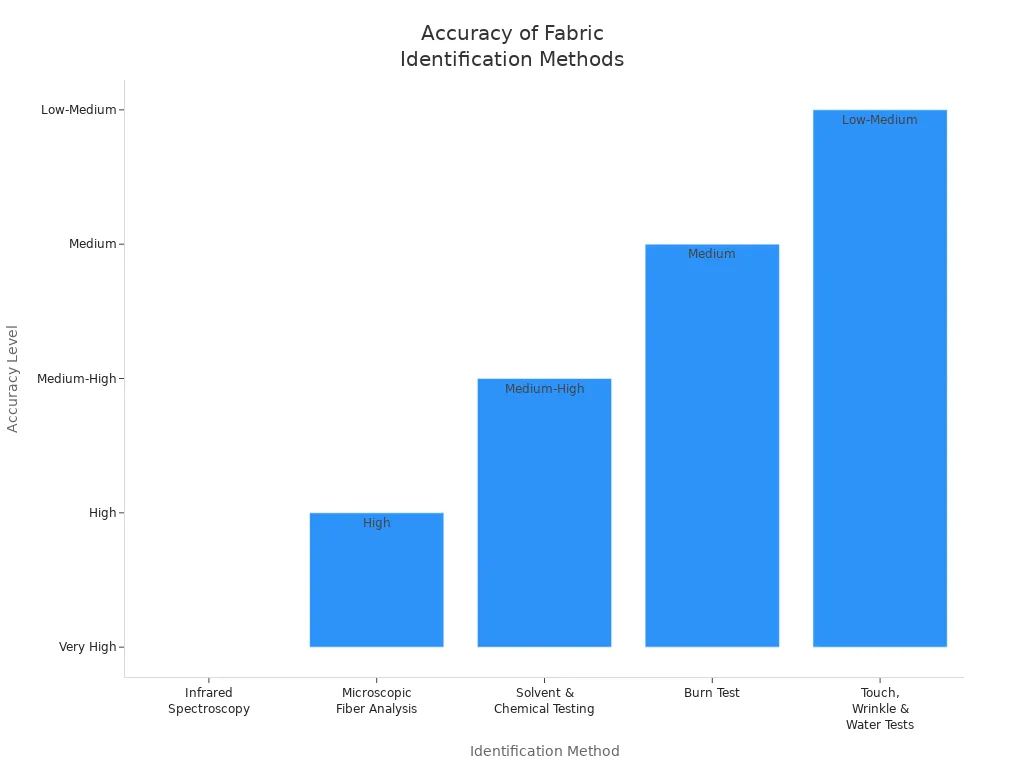
Knowing about fabric types helps you give people what they want and stops problems like shrinking or pilling. When you choose the right fabric for your project, your work turns out better and people are happier.
FAQ
How do you quickly tell the difference between knit vs woven fabrics?
You can look at the fabric closely. Knit fabrics show loops, while woven fabrics show a criss-cross pattern. Try stretching the fabric. Knit fabrics stretch more. Woven fabrics feel firm. These simple tests help you spot knit vs woven fabrics fast.
Why does the choice between knit vs woven fabrics matter for clothing?
You want your clothes to fit well and last. Knit vs woven fabrics give different results. Knit fabrics stretch and feel soft. Woven fabrics hold their shape and look neat. Picking the right one helps you get the comfort and style you want.
What is the difference between circular knit and flat knit?
The difference between circular knit and flat knit comes from how machines make the fabric. Circular knit fabrics form tubes with no seams. Flat knit fabrics come in sheets. You use circular knit fabrics for T-shirts and socks. Flat knit works for sweaters and scarves.
Can you use both knit vs woven fabrics for home projects?
You can use both types for home projects. Knit vs woven fabrics work for different needs. Knit fabrics feel soft and drape well. Woven fabrics last longer and keep their shape. Pick the one that fits your project best.
How does the difference between circular knit and flat knit affect fabric use?
The difference between circular knit and flat knit changes how you use the fabric. Circular knit fabrics suit seamless items like T-shirts. Flat knit fabrics work for items that need shaping, such as sweaters. You choose based on the final product you want.




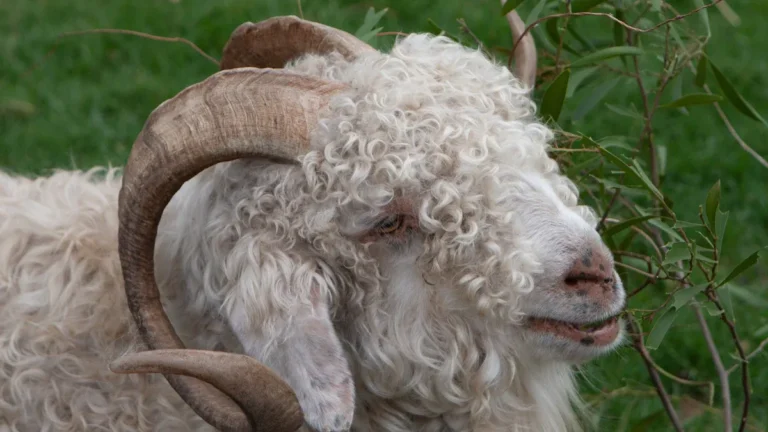
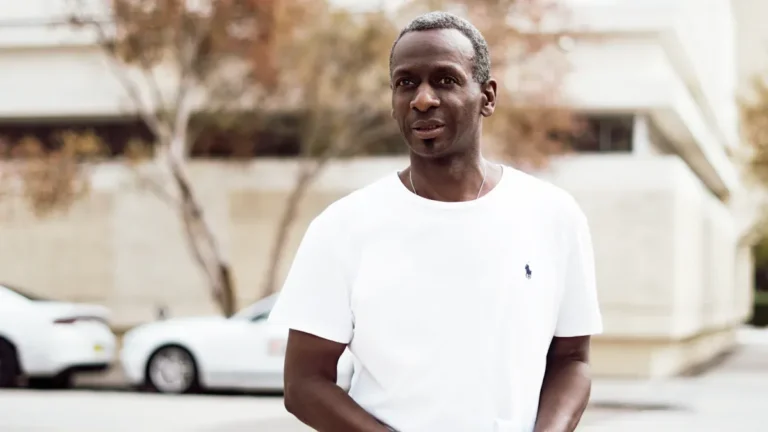
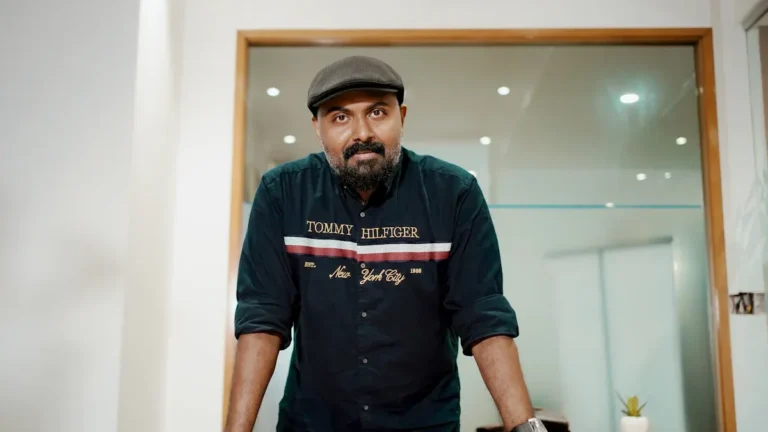
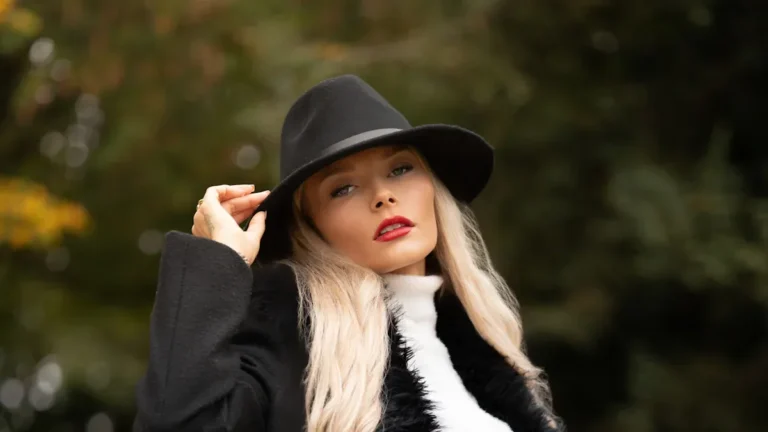
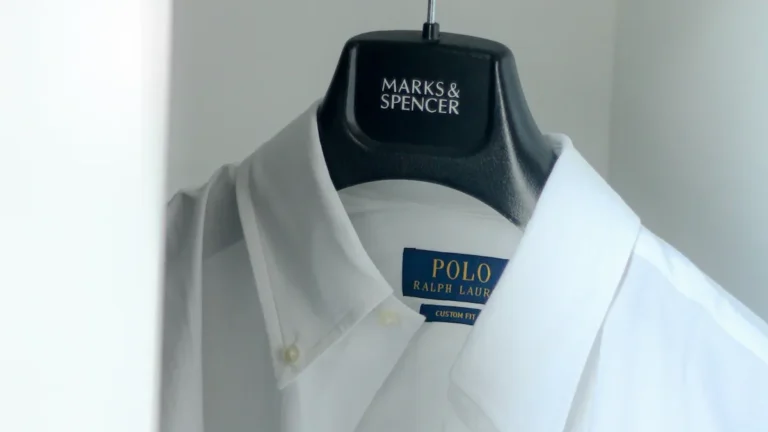

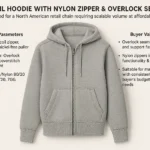
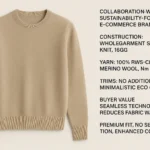



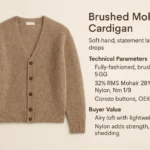
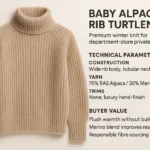
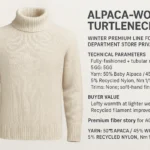
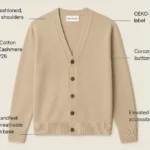
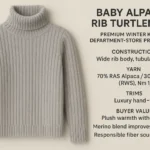
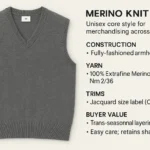
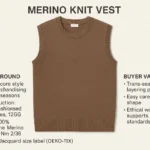
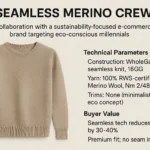

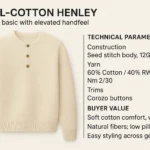
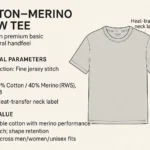
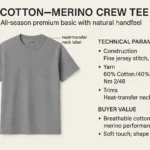

3 thoughts on “Knit vs Woven Fabrics: Practical Tips for Fabric Selection”
Pingback: Hemp vs linen which natural fiber stands out in 2025
Pingback: Does merino wool shrink Learn easy ways to stop it
Pingback: Bamboo or Merino Wool Which Fabric Wins for Clothing